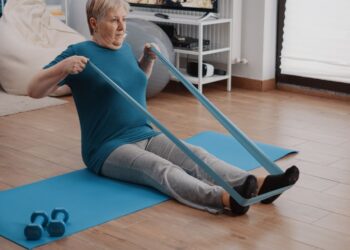Advances in adjustable-bed technology are certainly reshaping recovery environments in both hospitals and homes across North America. This article explores how modern adjustable beds really improve outcomes for patients, caregivers, and facilities alike.
In the United States and Canada, the journey from hospital stay to home recovery is increasingly supported by advanced equipment designed for safety, comfort, and mobility. One of the most impactful innovations is the modern adjustable bed. Once reserved exclusively for acute care settings, these beds appear in home-care and long-term-care environments. They help patients heal much more efficiently and with greater dignity.
The Expanding Role of Adjustable Beds
Hospitals have long relied on electric, height-adjustable beds to accommodate patient turns, transfers, and the significant demands of clinical care. But now, adjustable beds are clearly breaking out of institutional settings and entering the home-care space as key recovery tools.
This transition matters. A commercial home-care setting can now offer what was once only available in acute care. Patients recovering at home benefit from hospital-style support without the institutional feel. From short-term post-surgical recovery to long-term mobility challenges, adjusting height, tilt, and side rails improves safety and independence.
Especially in Canada and the U.S., where home-care and transitional care sectors are growing, caregivers and families seek equipment that bridges the gap between hospital and home. A rotating hospital bed, once the exclusive domain of acute rehabilitation units, now supports recovery and daily living in the home setting. Medical-grade care is becoming more accessible outside institutional walls.
How Ergonomic Features Support Faster Recovery
Modern adjustable beds do much more than move up and down. Ergonomic design innovations are at the heart of improved patient outcomes. Beds now have pressure-relief surfaces to prevent bedsores, rotational frames to assist turning, and sit-to-stand mechanisms to support mobility.
Ergonomic features support faster recovery by reducing complications. Mobility improves when a patient can be positioned comfortably, turned safely, or assisted into a more upright posture without excessive effort from the caregiver. The risk of pressure injuries and deconditioning drops.
In Canada and the U.S., where pressure ulcer prevention and fall risk mitigation are priorities in acute and home-care settings, investing in ergonomic adjustable beds makes sense. These beds support patient physiology and movement rather than simply providing a place to rest. Healing feels more natural when comfort and alignment come first.
Smart Controls and Monitoring Systems
The intersection of medical equipment and smart technology is transforming adjustable-bed design. Contemporary models often include programmable positioning, alert systems, weight sensors, and remote-control interfaces.
In a home-care environment, remote control simplifies caregiver tasks. Nurses, aides, or family members can adjust head or foot elevation, raise or lower bed height for transfers, and monitor patient movement in real time. For hospitals and transitional-care facilities in North America, beds that log usage data or trigger alarms for inactivity help reinforce safety protocols.
Smart beds enhance efficiency and reduce the burden on caregivers by offering both comfort and connectivity. The result is more focus on quality care instead of mechanical adjustments. Patients benefit from that personal touch, even in a high-tech environment.
Restoring Dignity Through Modern Equipment
Recovery is not just about healing the body; it’s about restoring independence and dignity. Adjustable beds contribute powerfully to this mission. When patients can adjust their bed’s elevation, tilt their torso, or shift posture with minimal help, they regain a sense of control and self-reliance.
In a Canadian home-care scenario or U.S. assisted-living setup, this empowerment translates into better mental health, fewer falls, and greater participation in therapy. For example, features that support sit-to-stand transitions allow patients to move safely to a standing position at their own pace.
That simple act reduces reliance on caregivers for everyday movements. It boosts morale. Patients feel more autonomous and less dependent. That psychological lift often accelerates physical recovery and reduces secondary complications that slow progress.
The Future of Patient Care: Sustainability and Innovation in Design
Looking ahead, two major currents, sustainability and digital integration, are shaping North America’s next generation of hospital and home-care beds.
In the near future, more models will feature eco-friendly materials and modular frames that adapt to changing patient needs. Many will integrate directly with telehealth platforms. For healthcare providers, this means equipment that improves outcomes and aligns with sustainability goals. Modular designs allow facilities and home-care agencies to upgrade components rather than replace entire beds, reducing waste and extending product lifespan.
Digital integration will soon allow bed sensors to communicate with medical records and telehealth dashboards. They’ll provide real-time recovery analytics, fall-risk data, and therapy tracking. These innovations promise better outcomes and greater operational efficiency for the North American healthcare market.
From hospitals to homes, modern adjustable beds are redefining recovery. With ergonomic design, smart controls, and a focus on independence and sustainability, these innovations improve patient outcomes across North America. As clinical and home care boundaries continue to blur, adjustable beds symbolize a future where recovery is safer, faster, and more dignified. Healing can now happen in comfort, supported by technology and thoughtful design.
Beyond their technical features, these beds represent a deeper cultural shift in care; one where comfort, accessibility, and dignity are seen as essential to healing. Families can now create recovery spaces that feel less clinical and more compassionate. As technology continues to advance, adjustable beds will not just support recovery; they will define it.














Discussion about this post